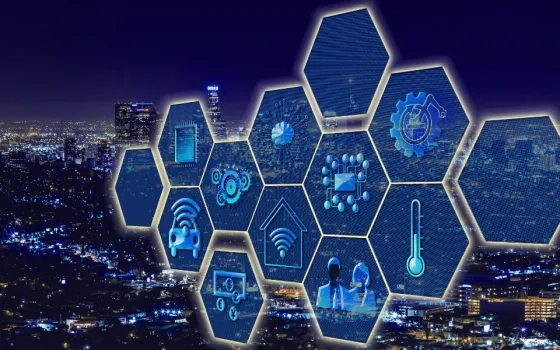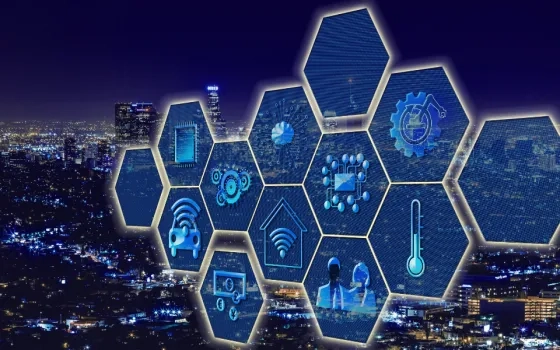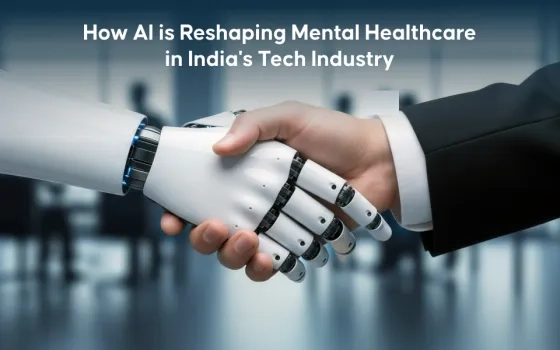Health care will need to keep pace with generational change and growing interest in technologies for wellness to get through the next wave.
Technology shaping consumer experience trends
The sands of consumer experience are ever-shifting. Shopping no longer means a trip to the mall. It's a one-click purchase from anywhere, around the clock, with 24/7 customer service. The same is true for banking and entertainment.
News today is beyond TV and movies, and beyond theatres. Across countries, the favorite entertainment activity of Gen Z is playing video games online. Streaming video on demand (SVOD) became an even bigger rage due to the COVID-19-induced acceleration of digital life, setting the stage for the metaverse. Social media rules the roost, as a one-stop shop for all of this, plus communities, content creators, influencers and more.
And all of this takes place via the convenience of mobile devices. In the United States, 81% of adults use smartphones, and India is expected to reach 1 billion smartphone users by 2026. There are digital and emerging technologies at play in every aspect of life, enhancing personalized consumer experiences based on user data.
For example, with SVOD, people are attracted by the content, but they — especially Gen Z — have been found to routinely cancel and resubscribe to manage costs. This is powerful information that is being used to retain subscribers by offering flexible pricing options.
Consumerism meets health care
The health care industry churns out a staggering amount of data, with digital consumerism ascending in equal measure, the pandemic having provided a decided uptick in increased digital adoption.
Based on a McKinsey survey, in February 2021, 24% of respondents reported that their latest medical appointment was conducted through telephonic or virtual means, as opposed to only 3% in 2019.
A recent Press Ganey survey tells us that for 84% of respondents, anything less than a 4-star online rating would be a deterrent when choosing a primary care provider. If this sounds familiar, it’s because this harkens back to digital consumer behavior in retail and hospitality.
People are using their smartphones to look for the same simplicity and options to get access to care, health records, medication, insurance and reimbursement, as for shopping, banking or entertainment. Here, however, the health care system falls short.
The expectations of the health care consumer remain greatly unrealized. Supplement that with the fact that there’s also a need to keep up with the expectations of millennials and Gen Z. Health care organizations will need to keep pace with generational change and growing interest in technologies for wellness to get through the next wave of change. "
The role of health care organizations
Consumption of health care services in case of illness is by default a negative experience, and providing a positive experience in times of distress is a massive task. According to PricewaterhouseCoopers (PwC), “nearly 80% of American consumers say that speed, convenience, knowledgeable help and friendly service are the most important elements of a positive customer experience.”
To top it all, it is evident that a positive clinical outcome, i.e., curing of the illness, is critically important to having an end positive experience. For many health care organizations, this shift in patient expectations adds to the daunting list of their priorities — improving care quality, controlling costs, adapting to new business models and managing the health of their patient population.
All of these priorities are inextricably linked and require health care organizations to discover and leverage opportunities to engage patients in their care. This helps improve clinical outcomes, lower costs and enhance the consumer experience.
Opportunities for health care organizations
Here are 4 opportunities for health care companies to create a modern, high-performing health system — the imperatives of a consumerism strategy in health care:
Health care at home: Patients want to receive care where they need it. The rapid adoption of in-home and portable digital diagnostics and remote monitoring tools are making home the epicenter of care. “The health care industry may soon be 80% service and 20% physical location,” points out an Optum e-book titled, “Transforming the six zones of consumer experience.”
Therefore, providers are leveraging technology for omnichannel engagement, and health plans are paying for it. With these steps, organizations have a chance to win with consumers on points of personalized service, cost and convenience.
Equity implies personalization: Providing equitable access to care cannot be made possible with a transactional approach to health care. Health care is inherently personal and requires an understanding of the patient’s life journey, and the stage they are in, including social influencers of health that impact their well-being.
Health care companies continue to use the patient/member data collected over a large duration of interactions with them to have individual-specific insights that can help address implicit and explicit individual, interpersonal, institutional and systemic bias.
The economics of choice: Consumers want a health system that’s easy to navigate, including cost transparency for different treatment options, before making a clear and informed decision about the care options they want to avail. They also want to pay for it through a payment channel of their choice. This clearly requires a reimbursement model for physicians based on health outcomes, i.e., value-based care and not for episodic interactions often called “fee for service (FFS).”
Consumers as partners: Increasingly, consumers want a seat at the table to be co-decision-makers or co-creators of their health care journeys. Forward-looking health care organizations know that today’s consumers are more focused on wellness than ever before and are supporting this investment with digital access to tools and information, automated schedules, timely, relevant communication, benefits information and more.
The insertion of genomics and digital twins to predict the health condition and proactively work with the member to build their health care journey will be a key differentiator. Health plans have an opportunity to have an à la carte option for members to create their own health plan based on benefits required at the stage of life they are in. Similarly, providers have to employ doctors who have a customer-centric approach to creating the treatment plan.
Adopting consumerism mindset in health care
While exploring these opportunities, there are some internal as well as external barriers that health care organizations need to surpass to support digital consumerism in health care.
Firstly, the consumption of health care has been associated with a burden of harm — poor health, chronic diseases, no guarantee for health care quality, a system operating in a dizzying array of difficult-to-navigate silos — enough reasons for consumers to shy away from the health care system. This perhaps remains the biggest challenge to advancing consumerism in health care.
The big point of difference in consumer experience in health care vis-à-vis other industries is the necessity for a balance between technology and human interaction. Humanness, empathy and insight in a symbiotic relationship with the tools of technology are central to consumer-centricity in health care.
Secondly, to manage cost instead of rewarding volume, value-based payment models reward provider and member engagement, systems integration, interoperability and more.
In the process, they are upending the FFS payment structures, which are still highly profitable for some. Value-based care business models also require substantial financial investment and are still unchartered territory for many health care organizations. In some geographies, it's still nonexistent.
There are also some challenges intrinsic to health care organizations that act as deterrents to keeping pace with the forever flux of consumerism:
Legacy organization design: With entrenched interests and practices of many decades, some health care organizations still have archaic processes that lead to a complex health system that is difficult and unpleasant to engage. Worldwide, payers and providers are restructuring their organizations around patient/member journeys.
Internal silos: Fragmented operations within health care organization and disconnected decision-making are not conducive to a compelling consumer experience. Organizational culture, mission and purpose play a very important role here, where departments unite internally and with the broader ecosystem outside the organizations walls, around the goal of an overarching patient-centered approach to creating a healthier world.
Investing to build the future of health care: A full commitment to consumerism will require health care organizations to consistently revisit and redesign their operating structures, technology stack and business models to meet future customer expectations. Therefore, it's critical to building something that can learn and change itself in the next 7 to 10 years in tandem with the evolving journeys and consumer requirements.
Advancing the era of health care consumerism
In conclusion, the future of health care will continue to be further defined by what health care consumers want, virtually and from in-person care. It will move further away from episodic care to continuous care that is proactive, personalized, consumer-friendly, retail-oriented and technology-driven. Needless to say, health care organizations have their work cut out for them.
This future of health care rests on an interplay of people and technology, calling for a doubling down on investment in both these areas. Technology isn’t about designing another app to fix health care. It’s about connecting people to their care teams, payers to providers and, ultimately, connecting a disconnected health system so that it works better for the people it was created to serve — by bringing transparency, personalization and empowerment to the way they find, experience and pay for care.
Achieving all of this requires talent that is passionate about designing optimal consumer experiences, by putting patients at the front and center of the health care system. This passion for solving complex problems can bring about a real impact on communities around the globe, and there isn’t a better domain than health care for creative designers, technologists, data scientists, behavioral economists, and all other health care and health tech professionals to do their life’s best work.
This article was written by Abhishek Kumar, vice president, operations, Optum Global Solutions (India) Pvt. Ltd and was published in BW Healthcare World.
For more such content, please visit - www.optum.in

















